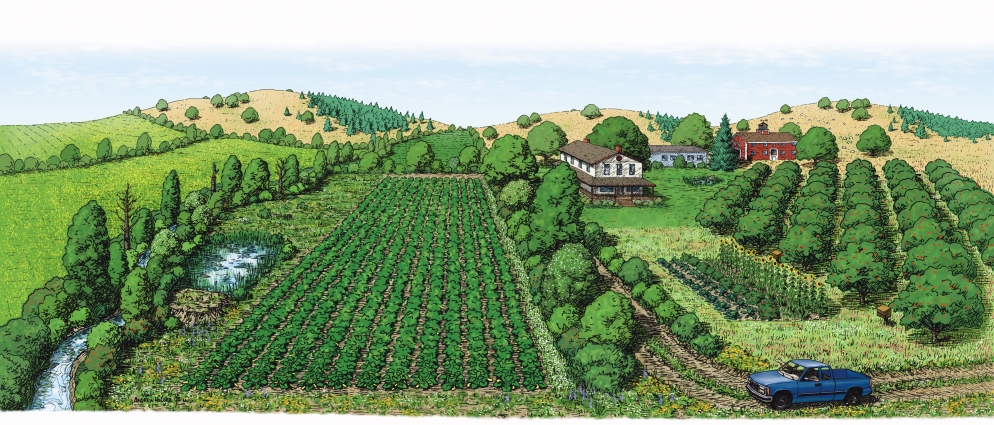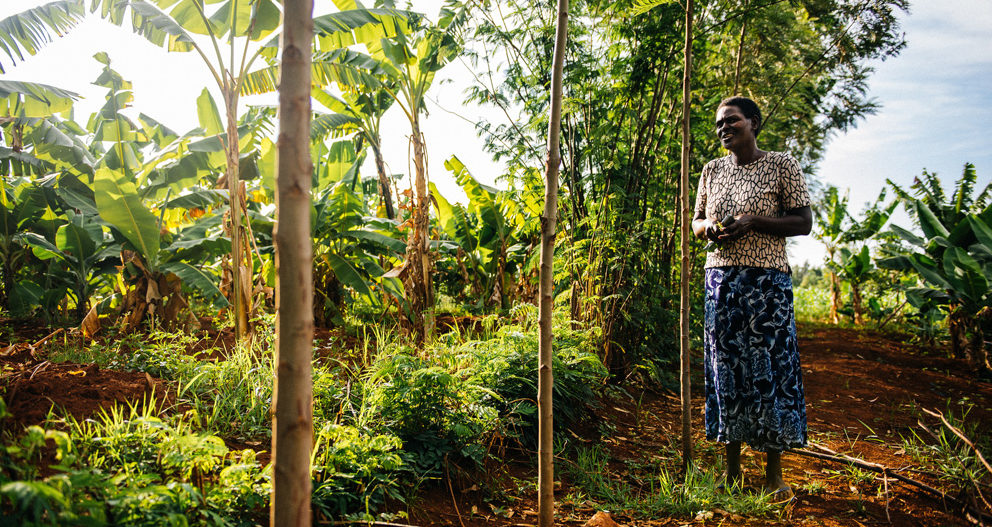
Agriculture is one of the leading drivers of biodiversity loss worldwide (Millenium Ecosystem Assessment, 2005), and as pressures on landscapes to produce food increase with population growth and the effects of climate change, the threat of converting more intact ecosystems into agricultural production continues to grow. In addition to imperiling critical habitats for non-human species, converting ecosystems like forests into agricultural production is a significant driver of global greenhouse gas emissions (IPCC, 2014). Finding ways to preserve biodiversity while increasing the supply of nutritious food and mitigating agricultural greenhouse gas emissions has been deemed the “triple challenge” of the modern era (Cantello-Baldwin, et. al., 2020).

In order to address this ongoing need, one of the action tracks for the upcoming UN Food Systems Summit is “Boost Nature-Positive Production.” Nature-positive production systems will look different depending on the region, but general themes include designing agricultural production systems that focus on enhancing the agricultural ecosystem where food production is taking place, rather than solely on the crop being produced. From providing habitat for beneficial insects and birds to reduce pesticide use, to creating habitat corridors such as hedgerows to allow for a wider array of species to utilize the land being farmed, there are many ways to increase biodiversity within agricultural operations.

At the same time, it is necessary to ensure that agricultural productivity and food yields are also being enhanced. Since expanding agricultural production into intact ecosystems will be less and less ideal from a biodiversity perspective, it is necessary to reimagine and redesign agricultural production systems to be both high yielding and multifunctional in terms of landscape and livelihood outcomes. Waldron, et. al. (2017) suggest a framework for agricultural system design that aims for “high enough yield for food security, with maximum co-benefits” to the surrounding landscape.

Photo: Amunga Esuchi.
Agricultural systems that are designed to provide multiple yields, such as agroforestry systems, represent a means by which farm productivity can increase both spatially and temporally. By diversifying yields from existing croplands currently producing single crops, farmers can make better use of agricultural lands, which increase over time as perennial shrubs and trees provide yields including fuel wood, medicines, fiber, and animal fodder. Perennial species in agroforestry systems can also provide habitat, nectar and pollen resources, nesting sites, refugia, and travel corridors for animals with large ranges (Jose, 2019).

In order to meet the pressing challenges of intensifying climate change, declining biodiversity, and ensuring a safe and nutritious food supply for a growing population, it will be necessary to redesign agricultural systems in ways that enhance productivity while also preserving and enhancing both on-farm and off-farm ecosystems. Enhancing on-farm diversity through integrating agroforestry practices is one important way to meet these challenges, as careful selection of species can diversify yields of nutritious foods and marketable products while simultaneously providing important ecosystem functions. Aligning research, education, and implementation goals around these priorities will ensure that the multifaceted challenges facing global food production and ecosystem stewardship will be met with creative, regenerative, and resilient agricultural solutions.
References
Cantello-Baldwin, W., Clark, M., Cornelius, S., Francis, A., Ghazoul, J., Gordon, J., Halevy, S., Matthews, N., Smith, P., Tickner, D., Wright, M. & Young, L. (2020). The ‘triple challenge’ and tackling trade-offs between climate, food and biodiversity goals. Global Landscapes Forum White Paper. https://www.globallandscapesforum.org/wp-content/uploads/2020/05/The-triple-challenge-and-tackling-trade-offs-between-climate-food-and-biodiversity-goals-Final2.pdf. Accessed 23/2/21.
Jose, S. (2019). Environmental impacts and benefits of agroforestry. In Oxford Research Encyclopedia of Environmental Science.
Millennium Ecosystem Assessment (2005). Ecosystems and Human Well-being: Our Human Planet-Summary for Decision-makers.
Waldron, A., Garrity, D., Malhi, Y., Girardin, C., Miller, D. C., & Seddon, N. (2017). Agroforestry can enhance food security while meeting other sustainable development goals. Tropical Conservation Science, 10, 1940082917720667.
Pachauri, R. K., Allen, M. R., Barros, V. R., Broome, J., Cramer, W., Christ, R., … & van Ypserle, J. P. (2014). Climate change 2014: synthesis report. Contribution of Working Groups I, II and III to the fifth assessment report of the Intergovernmental Panel on Climate Change (p. 151). Ipcc.